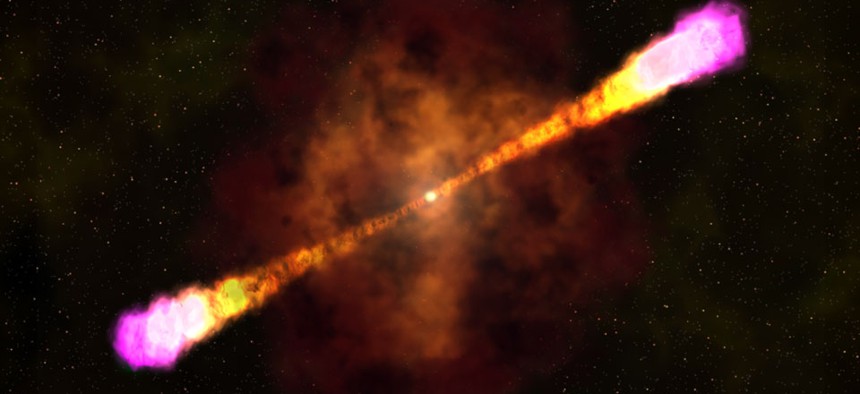Your Smartphone Can Detect Ultra-High Energy Cosmic Rays. Here’s Why That Matters

This image provided by NASA's Goddard Space Flight Center shows an artists rendering on how a gamma ray burst occurs with a massive star collapsing and creating a black hole and beaming out focused and deadly light and radiation bursts. NASA Goddard Space Flight Center/AP
When your smartphone detects a cosmic ray, it can share data with the researchers, allowing them to study the rays in more detail than ever before.
Smartphones let you do many things conveniently—check email, get directions, buy pizza. But chances are you’ve never realized that your smartphone can also detect very high-energy cosmic rays that hit the Earth from space.
A group of physicists did notice, and thought it was very convenient, indeed. That’s because your smartphone—or, more accurately, one million smartphones spread across the globe–could be the key to observing these cosmic rays.
Ultra-high energy cosmic rays were discovered decades ago, but little is known about them because building detectors has long been too expensive and difficult to do at scale. But the physicists knew that the sensors on smartphone cameras could detect the rays. In a recently-submitted paper, they described an approach for turning a bunch of smartphones into a huge, distributed cosmic-ray detector, all with the download of a simple app. When a smartphone detects a cosmic ray, it can share data with the researchers, allowing them to study the rays in more detail than ever before.
The project is known as CRAYFIS—Cosmir RAYS Found In Smartphones. You can sign up to participate in the project here. Participants will be listed as co-authors of papers that result from the project.
CRAYFIS is a new take on the relatively old idea of “volunteer computing,” where ordinary people allow researchers to harness their personal computers to work on small parts of problems that require vast amounts of computation. The first volunteer computing project, which searches for a special type of prime number known as a “Mersenne prime,” began in 1996.
Volunteer computing exploded within the scientific community during the 2000s. It offered a way for underfunded research projects to access computing resources more comparable to that of a large organization flush with cash. It also allowed ordinary people to contribute to the advancement of all types of science, from mathematics to molecular biology to the search for extraterrestrial life.
CRAYFIS is based on the fact that every smartphone is not just a little computer, but also an array of sensors. In this case, those sensors are used to detect cosmic rays. But if the paradigm of volunteer computing continues to be applied towards smartphones, the scientific possibilities could be endless.


